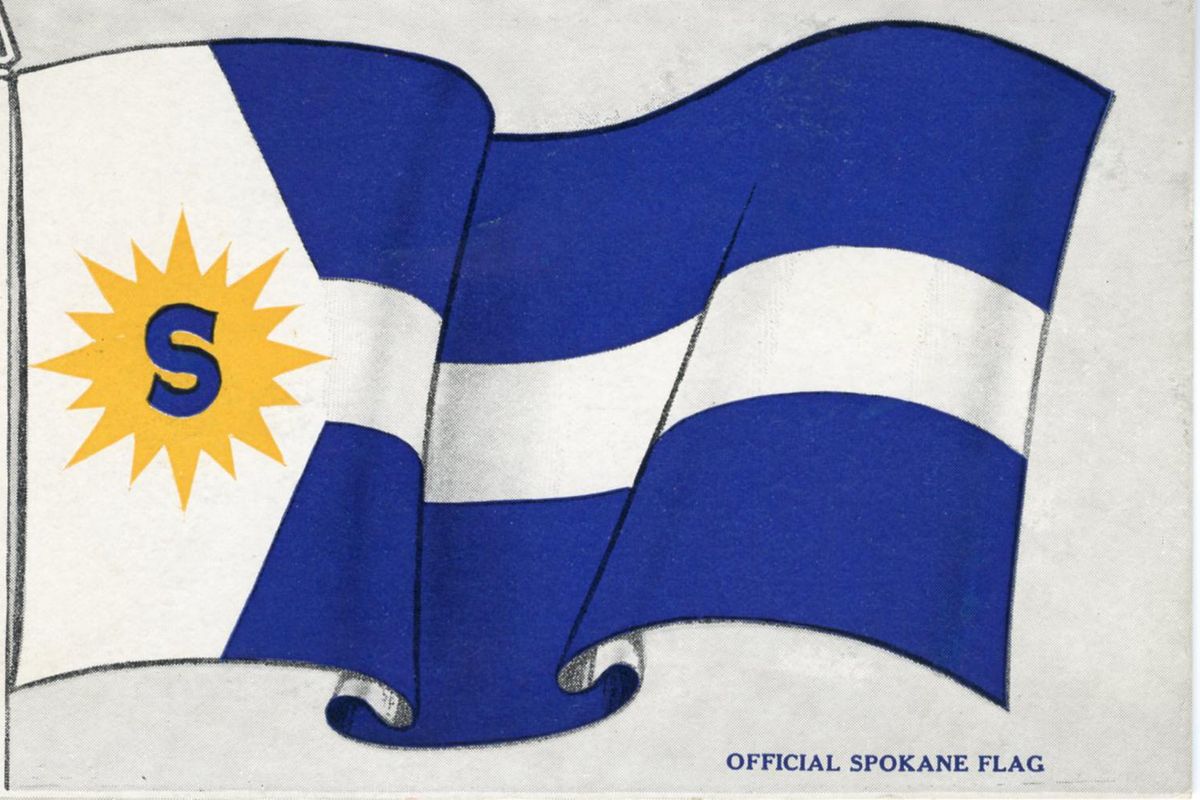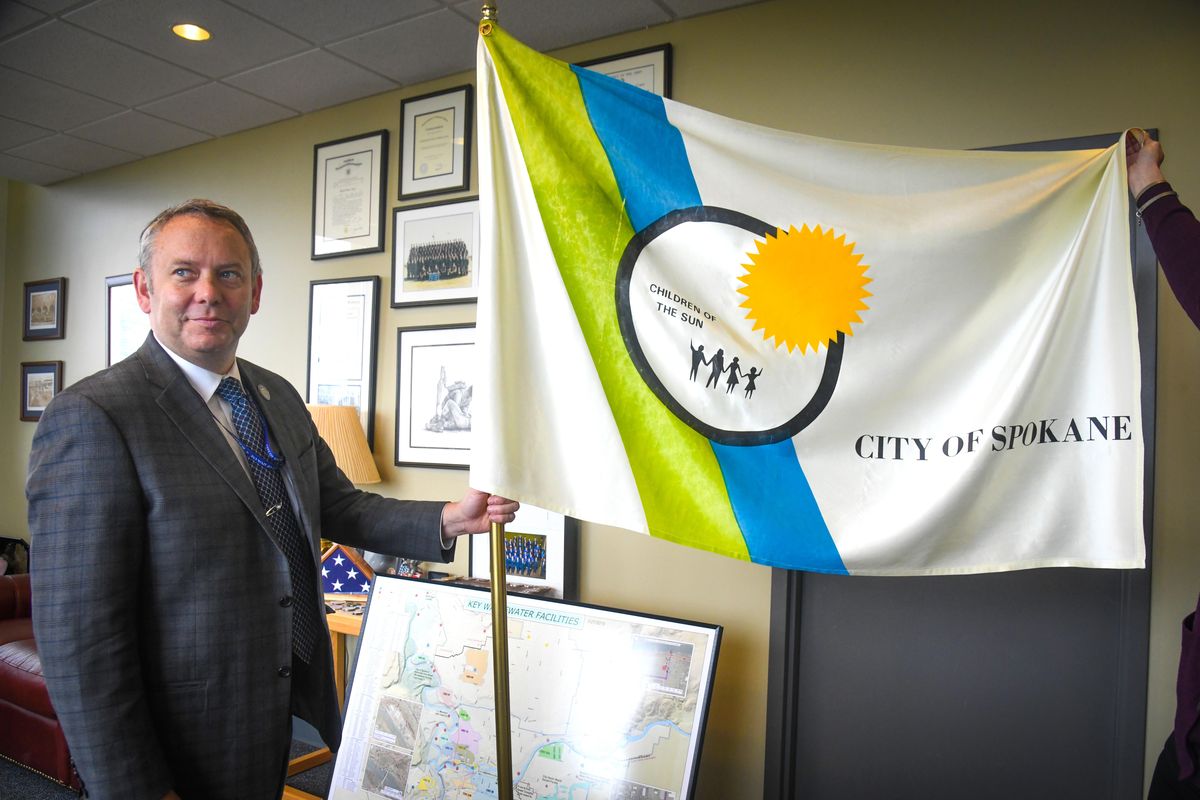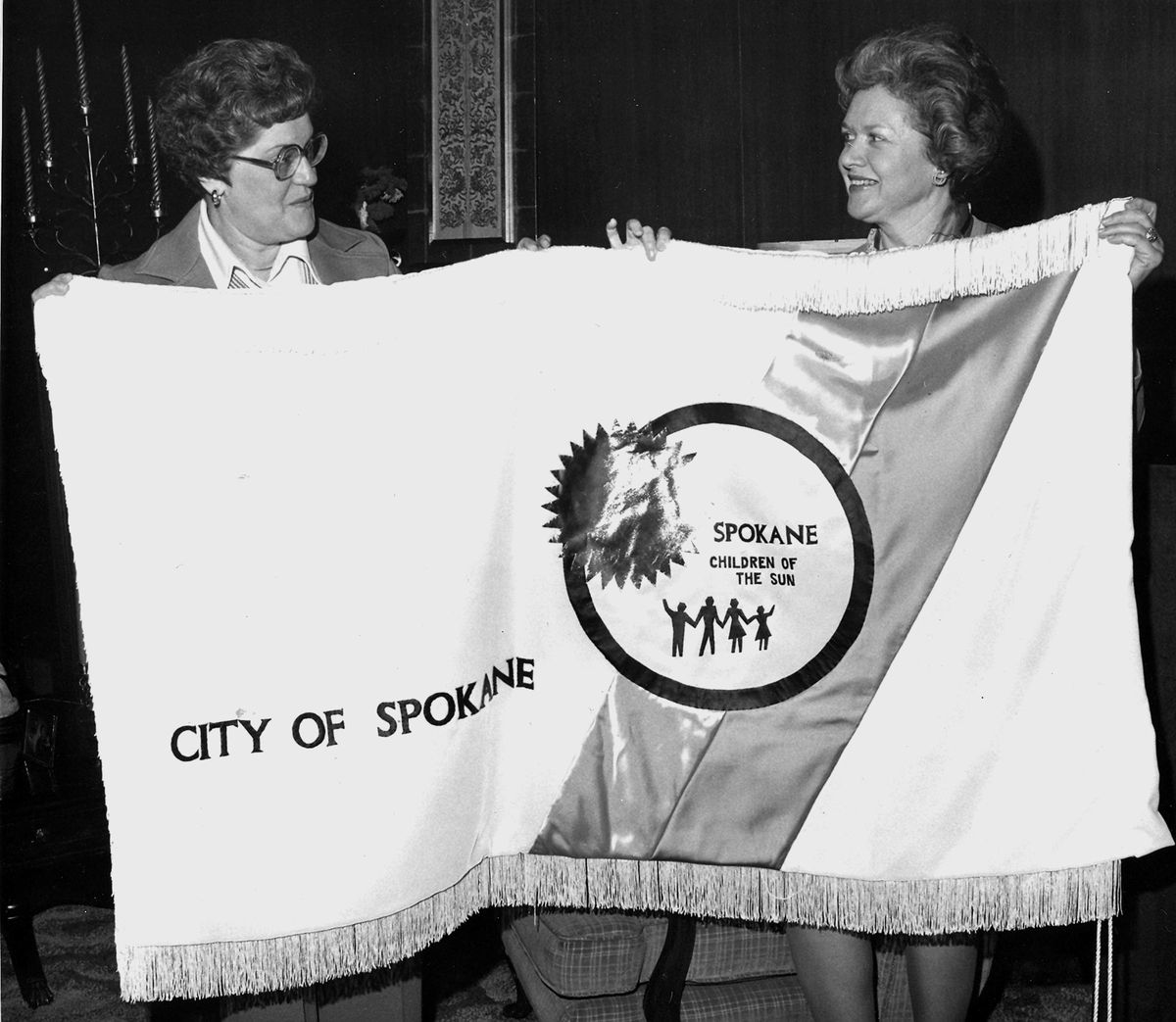Spokane’s new flag design will be a community effort

The official Spokane flag was so ugly in the 1950s, the business community designed and raised its own instead, according to one local historian.
More than half a century and at least one more failed iteration later, the city hopes to settle on a new flag once and for all.
Over the coming months, the newly formed Spokane Flag Commission will undoubtedly review a deluge of designs for a new city flag. But one thing almost everyone appears to agree on is that Spokane’s current banner, adopted in the 1970s, should be neatly folded and stuffed into the city history books.
“In a nutshell, the design is very complicated,” said Joshua Hiler, chairman of the commission, which held its first meeting last month.
Hiler is leading a diverse group of volunteers that make up the commission, the formation of which was led by Spokane City Councilwoman Kate Burke in 2019.
“It’s probably the most nerdy group ever. It’s the best,” Burke said.
The commission consists of 10 budding vexillologists, the term for people who study flags, who held their first official meeting last month. Though it’s early days, the commission is starting to roughly outline the process it will follow to reinvent the flag.
Whatever design wins out, it will be the fourth iteration of the city flag. And it probably won’t have stick figures.
The city’s current flag features the same blue and green colors as the Expo ’74 mobius design. Although both are created by the same designer, that’s where the similarities end. The flag includes four hand-holding stick figures inside a black circle that contains the words “children of the sun” and is topped by a bright yellow sun. To the right, the flag spells out “City of Spokane.”
Spokane Mayor David Condon displays the city of Spokane flag in his office, Tuesday, May 21, 2019. (Dan Pelle / The Spokesman-Review)Buy a print of this photo
It violates almost every principle of good flag design laid out by the North American Vexillological Association, which recommends that flags be simple, avoid seals or lettering, use significant symbols, be distinct and be limited to a few colors. (Yes, the Vexillological Association has a flag of its own.)
“You wouldn’t be able to tell what that is from 30 or 60 feet away,” Andrew Whitver, a commission member, said of Spokane’s flag.
Given its lettering and detailed design elements – such as dozens of fine points on the sun – Spokane’s flag would be exceptionally difficult to reproduce if someone wanted a copy of their own, according to Chet Caskey, a local historian and member of the North American Vexillological Association. Caskey isn’t a member of the commission but is advising it.
“Spokane has certainly been through the ringer, from halfway decent to terrible flags over the last century,” Caskey said.
When he took interest in the issue, Hiler had initially proposed the city just return to its 1920 flag, which features a blue “S” in the center of a yellow sun on its left side. The right three-quarters of the flag consist of three horizontal bars – blue on the top and bottom with a white strip in the center.
Though the exact process has yet to be settled, members expect to solicit designs from the public. But before it does, the Flag Commission expects to take time reviewing the city’s cultural symbols and the parameters of a flag design and settling on a process to determine a winner.
The commission is considering ways to limit voting to Spokane residents, lest it end up with a “Flaggy McFlagface” on its hands. In 2016, a British government agency learned the perils of an online and open democratic process when the most popular name for a new, $287 million research vessel was “R.R.S. Boaty McBoatface.”
Spokane is just one of several cities to reconsider its flag in recent years, in no small part due to an episode dedicated to the topic from the podcast 99% Invisible and a corresponding, and very popular, TED Talk.
Hiler hopes to largely replicate the process that played out in Pocatello, Idaho, a city that in 2017 transformed the nightmarish detritus of turn-of-the-millennium design elements into a simplified flag – a bright yellow sun peeking from behind a red silhouette of a three-peaked mountain range draped in blue sky.
Pocatello, for example, received more than 700 submissions from 26 countries when it opened its redesign process to the public. But that city benefited from the publicity of having its flag maligned in 99% Invisible host Roman Mars’ TED Talk and designated as the worst flag in North America by the Vexilloligical Association.
It remains to be seen if Spokane’s flag redesign generates the same level of interest, but signs point to yes.
The city’s flag has occasionally become fodder on the Reddit forum dedicated to Spokane. On a post last year, one commenter wrote that the “flag definitely does not do the city justice. Granted, it was designed in the 1970s, but good lord.”
The community excitement is no surprise to Hiler, who is active in a vexillology forum on Reddit with more than 300,000 members worldwide. (The most popular post of a recent week lamented the city of Jennings, Missouri’s decision in 1996 to add text to its otherwise simple flag design.)
Cities unsuccessful in their flag design endeavors have implemented a top-down approach, Hiler said, hiring graphic designers and limiting public involvement.
Hiler wants to avoid ending up with a “seal on the bedsheet” design, as is currently the case with every state flag in the American Northwest, including Washington. The phrase refers to flags that feature an official seal atop a single-color background.
By democratizing the process and involving the public, he expects a better results.
But why go through all of this effort for a new flag?
Many who have endorsed the project see the new flag as a potential point of civic pride.
“We want a flag that says this is Spokane. It’s unique,” Caskey said. “This is Spokane, remember it.”
Burke has the flag of Chicago, where she previously lived, tattooed on her leg. She said it’s hard to walk into any sort of establishment in the city where they aren’t selling something bearing the flag or where you won’t find someone with the flag on a T-shirt or tattoo.
“It’s everywhere,” Burke said. “There’s just such a different culture of pride in Chicago.”
The hope is to have a new flag to raise by Flag Day 2021.




